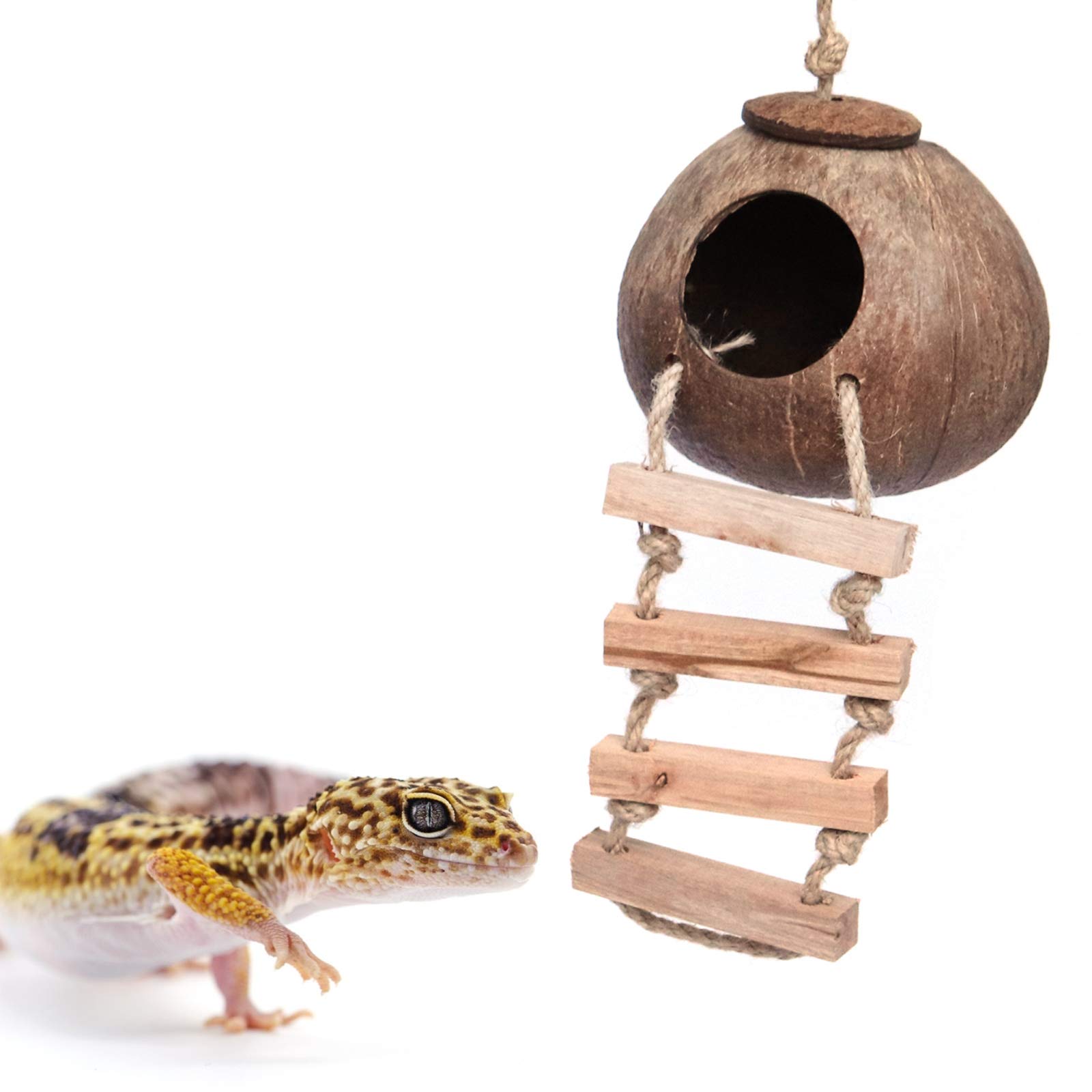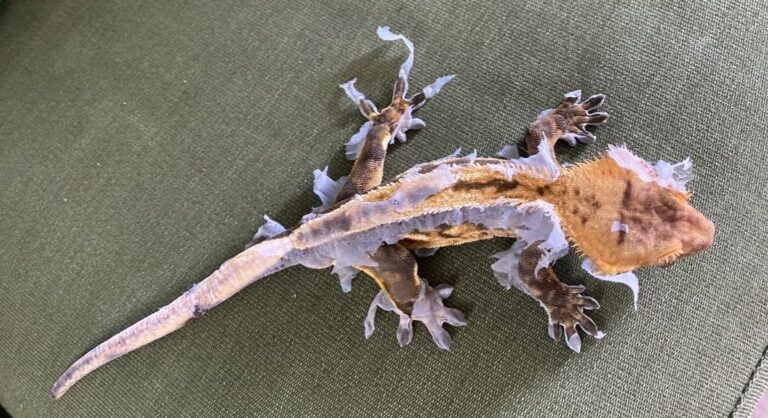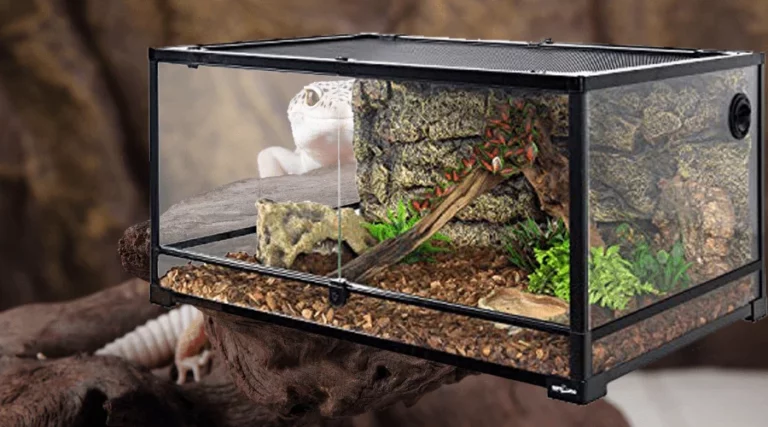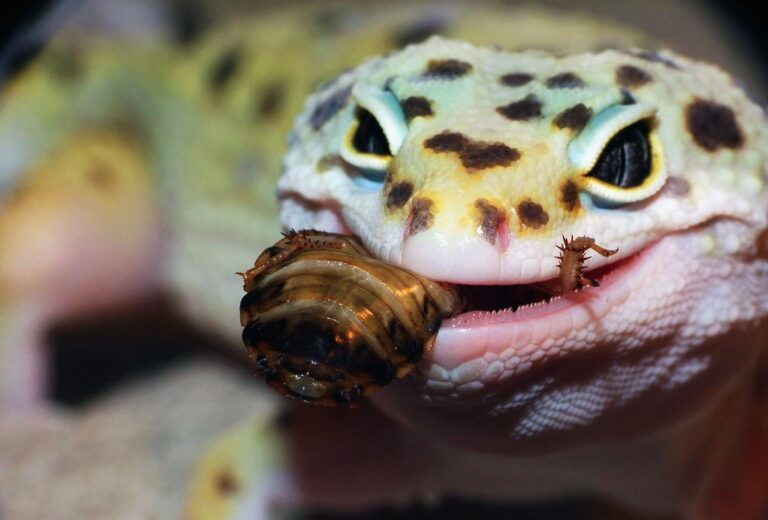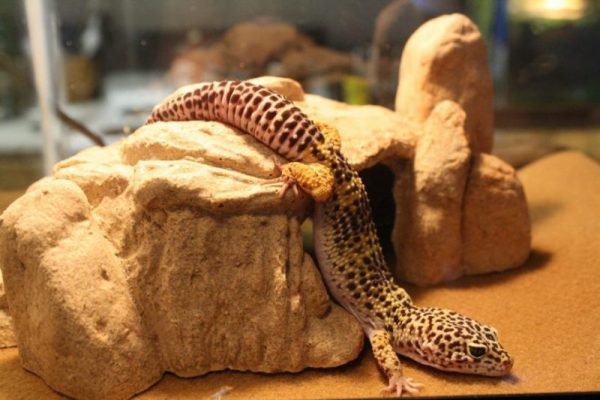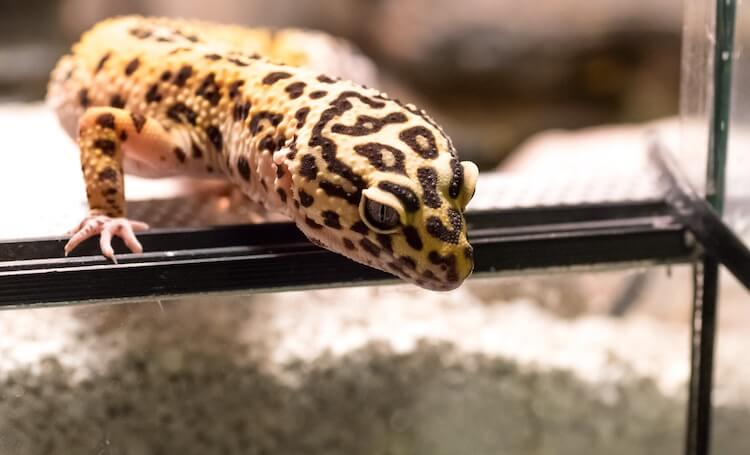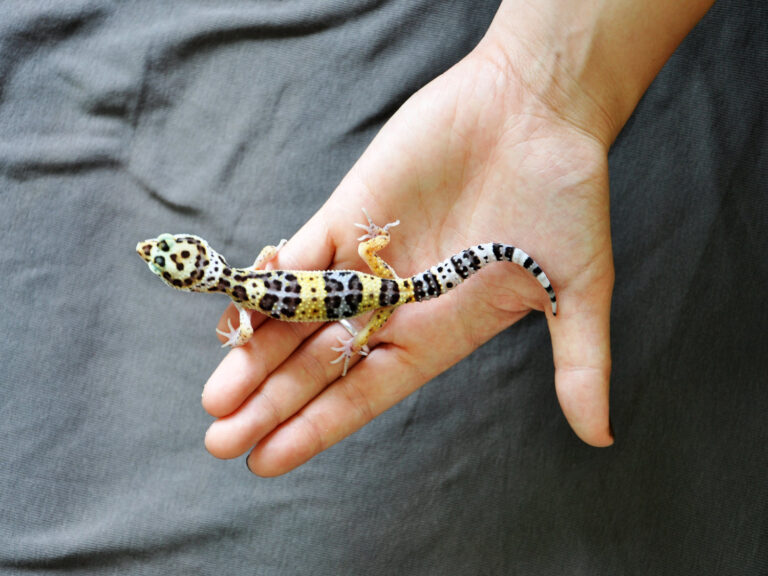Is Coconut Fiber Good for Leopard Geckos? A Care Guide
When I first welcomed my leopard gecko into my home, I was on a quest to create the perfect habitat, one that mirrored the warmth and comfort of their natural environment. Among the many choices for substrates, coconut fiber emerged as a subject of intrigue and curiosity.
The lush, earthy texture and promises of humidity regulation intrigued me, but the question lingered: Is coconut fiber a safe and suitable substrate for leopard geckos?
Yes, it is a safe and great option for your leopard gecko’s terrarium. When used as a carpet, it’s non-toxic, breathable, and hard for geckos to eat. It also helps maintain the right moisture levels for your pet’s health. So, it’s a secure and practical choice.
In this guide, we will embark on a journey of discovery, exploring the world of substrate for these beloved reptiles.
What is a substrate?
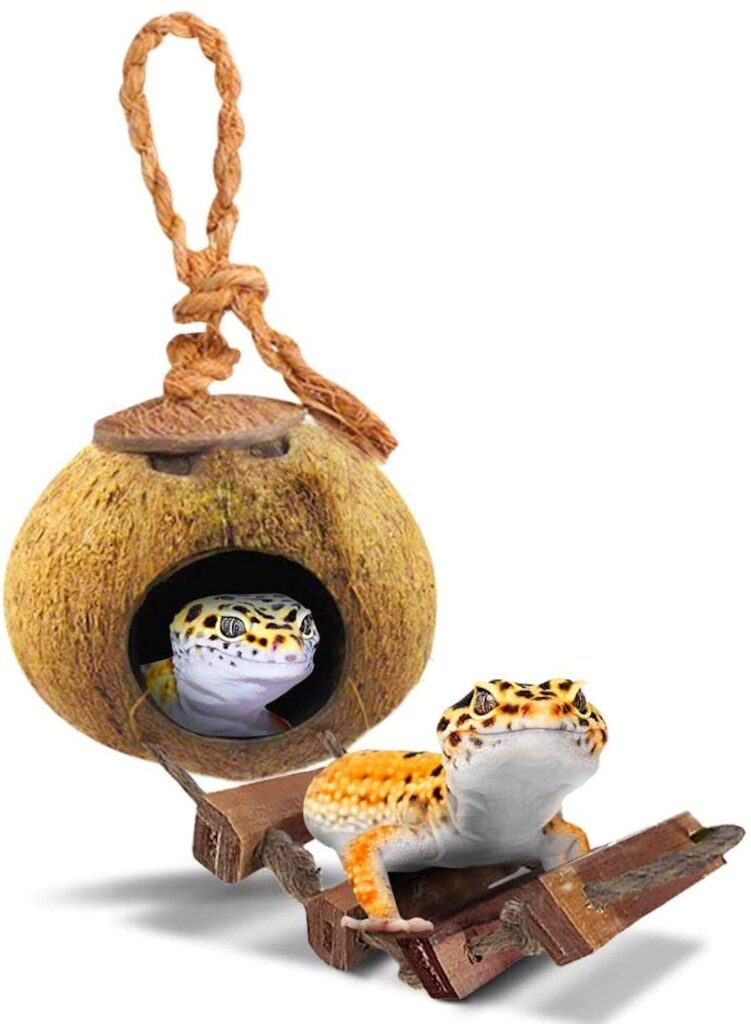
A substrate is a material or substance that is used to cover the bottom of an enclosure or habitat, such as a terrarium or aquarium, to create a suitable environment for animals. It serves several purposes, including providing a surface for animals to walk on, aiding in maintaining humidity levels, and offering a naturalistic or decorative element to the habitat.
In the context of reptile keeping, the choice of substrate can impact the health and well-being of the animals, as different species have specific requirements. It can vary widely and include materials like sand, soil, coconut fiber, paper towels, and more, depending on the needs of the animals being housed.
Optimal Substrate Types for Leopard Geckos
Here are some of the best substrate types, each with its own set of advantages:
Reptile Carpet:
Reptile carpets, also known as Repti-Carpet, are a favored choice among leopard gecko owners. These carpets are easy to manage as they are not loose or messy. They can be cut to size and come in convenient rolls. Additionally, they are durable and pose a low risk of ingestion. Their distinctive appearance can enhance the aesthetics of your gecko’s habitat, and they dry quickly for easy cleaning.
Also, It’s important to note that Repti-Carpets should be promptly cleaned when soiled to prevent permanent stains.
Paper Towels:
While not the most visually appealing option, paper towels are highly recommended, especially for younger leopard geckos. They are easily replaceable and offer excellent cleanliness, reducing the risk of illness.
Further, The white color of paper towels allows for easy detection of unwanted pests like mites and mold. They are hygienic and soft, making them ideal for sensitive gecko bellies. Paper towels are affordable and preferred by breeders and enthusiasts with multiple enclosures to maintain.
Stone Slates:
Stone slabs are not only visually appealing but also practical. They create a natural environment and effectively distribute and retain heat. Like Repti-Carpets, there is no risk of ingestion with this substrate. Cleaning is straightforward, making it a top choice for those who want to minimize tank maintenance.
Coconut Fiber:
Coconut fiber is an affordable option with a natural look and excellent antimicrobial properties. It prevents mold, rotting, and odors. However, it can be controversial because there is a slight risk of ingestion. Some argue that it can be digested and is less likely to cause impaction compared to sand.
In addition, Others caution against unnecessary risks. Coconut fiber won’t increase humidity levels in the enclosure, which is vital to prevent health issues in your gecko. It allows digging and can be used both wet and dry, eliminating the need for multiple substrates.
Excavator Clay Substrate:
Excavator clay substrate, though pricier, offers unique benefits. When adequately moistened, it can be molded like clay, retaining its shape when it dries. This unique property allows you to create custom burrows, caves, and basking spots. It provides an opportunity for creative landscaping within the enclosure, making it stand out as an innovative choice.
Substrate Selection: Choices to Steer Clear of for Leopard Geckos
Certain substrates should be unequivocally avoided when it comes to housing your leopard gecko due to the significant risk they pose to your pet’s health and well-being. Here’s a list of substrates that must be avoided at all costs:
Sand:
Sand is one of the most problematic substrates for leopard geckos. It’s loose, messy, and, most importantly, edible. Despite the misconception that leopard geckos hail from sandy deserts, they actually originate from rocky and grassy desert environments in Asia. Ingesting sand can lead to a serious digestive condition called impaction, which can be fatal.
Wood Shavings:
Wood shavings, such as pine or cedar, should be avoided as they can release harmful aromatic oils and dust that can irritate your gecko’s respiratory system. These substrates are not suitable for leopard geckos.
Gravel:
Gravel is not an appropriate substrate for leopard geckos. Its hard and uneven surface can injure your gecko’s delicate skin and feet, leading to discomfort and potential injuries.
Corn Cob:
Corn cob bedding should be avoided because it can retain moisture and promote bacterial growth. This can lead to skin issues and infections in leopard geckos.
Quartz:
Quartz substrates are abrasive and have sharp edges, posing a danger to your gecko’s skin and well-being. Avoid this substrate to prevent injuries.
Walnut Shells:
Walnut shell substrates are notorious for causing impaction in leopard geckos. The sharp, hard edges can be ingested and lead to serious health problems.
Substrates with Sharp Edges:
Substrates with any sharp or abrasive components should be avoided, as they can harm your gecko’s skin and cause injuries. Prioritize substrates that are gentle and safe for your pet.
Coconut Fiber as a Substrate for Leopard Geckos: Pros and Cons
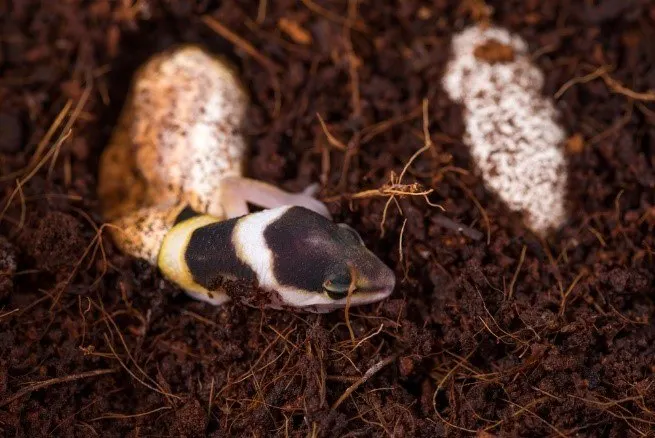
Coconut fiber, also known as coconut coir or coconut husk substrate, is a substrate choice that is frequently considered for leopard geckos. The suitability of coconut fiber for these reptiles depends on a variety of factors, including husbandry practices, the gecko’s behavior, and individual gecko health.
Here’s an examination of the advantages and disadvantages of using coconut fiber as a substrate for leopard geckos:
Benefits of Coco Fiber:
Naturalistic Appearance: It can lend a natural and aesthetically pleasing look to the enclosure, replicating the gecko’s native habitat.
Moisture Retention: Also, has the capacity to retain moisture, aiding in the creation of a suitably humid environment within the enclosure. This can be beneficial for leopard geckos, as they require a degree of humidity for proper shedding and overall well-being.
Enrichment Opportunities: The use of this substrate permits natural behaviors like digging and burrowing, offering enrichment and mental stimulation for them.
Safe if Ingested in Small Amounts: Generally, it is considered safe for them when ingested in small quantities during routine exploration or feeding activities.
Drawbacks of Coconut Fiber:
Difficulty in Cleaning: Cleaning can be more challenging compared to other substrates, as waste and debris may become lodged within the substrate, necessitating frequent maintenance and cleaning.
Risk of Impaction: Ingesting large amounts of fiber can pose a risk of impaction, a condition where the gecko’s digestive system becomes obstructed by substrate material, potentially leading to health issues.
Cost: may be pricier compared to some alternative options available on the market.
Not Suitable for All Geckos: Some may not favor or tolerate, exhibiting stress or discomfort due to its texture or moisture levels.
FAQs
Q1: Why Do Leopard Geckos Eat Substrate?
A1: Leopard geckos might accidentally ingest substrate while hunting for food or exploring their habitat. It’s crucial to use safe substrates to minimize this risk.
Q2: Should I use coconut fiber for my leopard gecko?
A2: Yes, Coconut fiber can be a suitable substrate for leopard geckos when used as a carpet. It’s non-toxic, breathable, and helps maintain proper humidity levels.
Q3: Is Eco Earth Loose Coconut Fiber substrate good for leopard geckos?
A3: Yes, While Eco Earth Loose Coconut Fiber can be safe for leopard geckos, it’s essential to use it carefully, monitor ingestion, and ensure it’s not too loose to prevent impaction.
Q4: What substrate is bad for leopard geckos?
A4: Substrates to avoid for leopard geckos include loose materials like sand, wood shavings, gravel, and sharp-edged options that can pose health risks.
Q5: What is the best heat source for a leopard gecko?
A5: The best heat source for leopard geckos is an under-tank heating pad or heat mat, placed on one side of the enclosure to create a temperature gradient. This simulates their natural environment and aids digestion.
Final Words
In conclusion, after exploring the use of coconut fiber as a substrate for leopard geckos, I find it to be a suitable choice for creating a secure and naturalistic habitat. Its non-toxic, breathable properties, along with its ability to help maintain proper humidity levels, make it a viable option. When used as a carpet in the gecko’s terrarium, it’s less likely to be ingested, addressing concerns about impaction.
However, as with any substrate choice, close monitoring of my gecko’s behavior and health will remain a priority to ensure a clean, safe, and healthy environment. Overall, coconut fiber appears to offer a balanced combination of practicality and well-being for my leopard gecko’s habitat.

